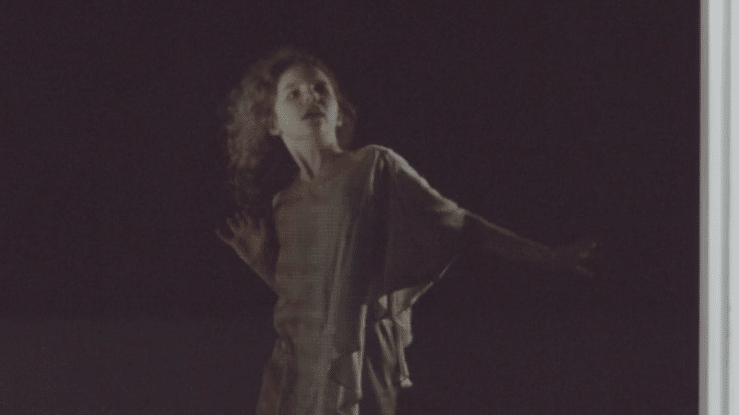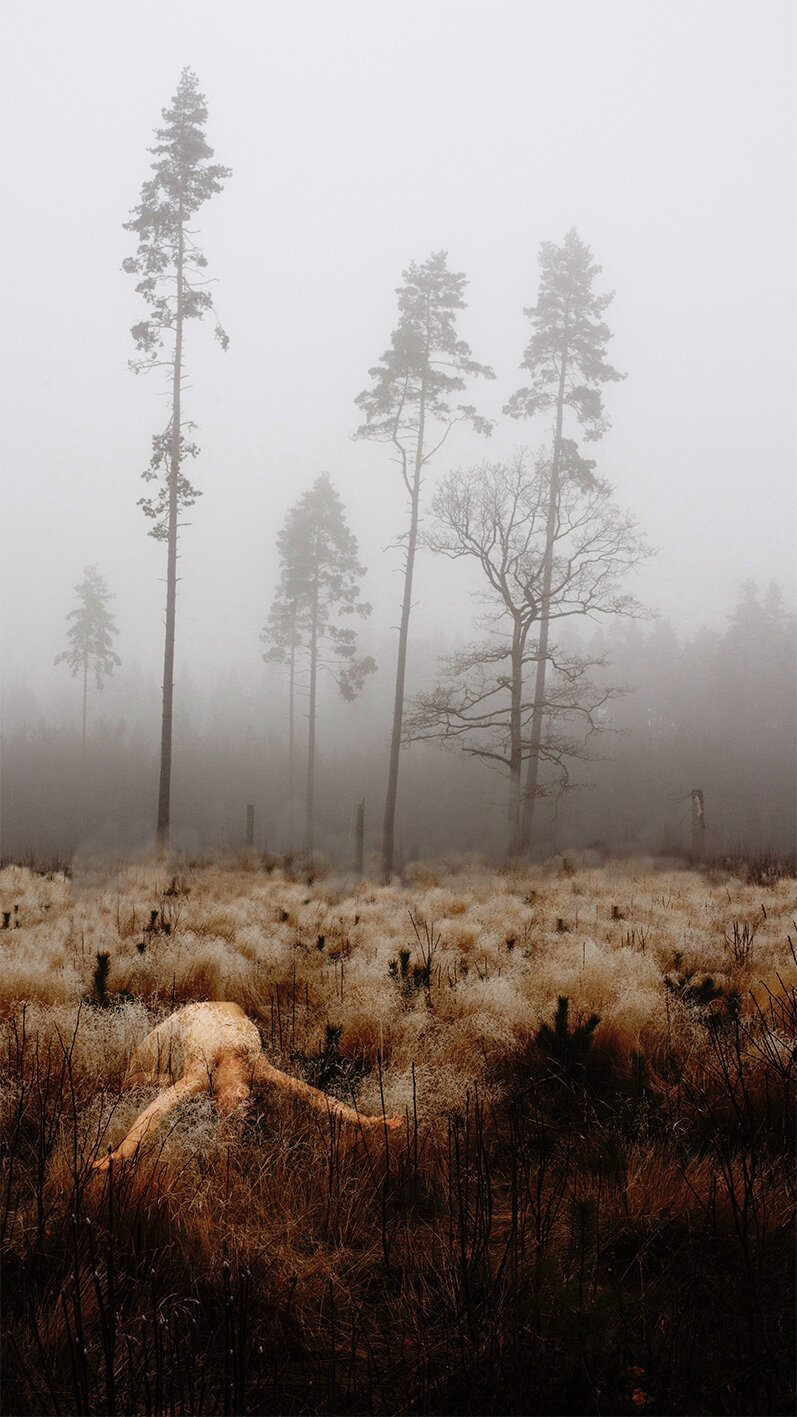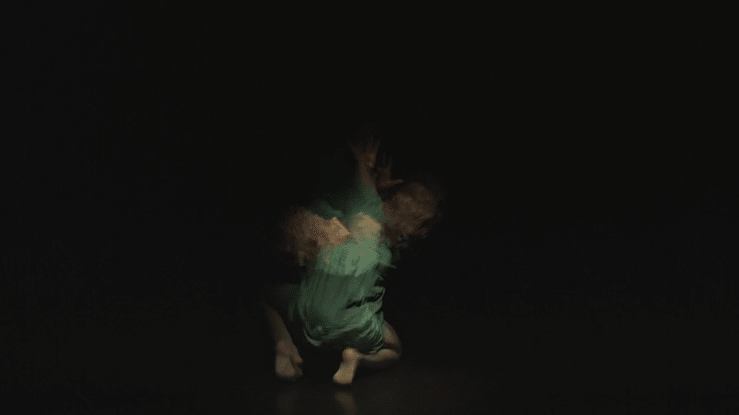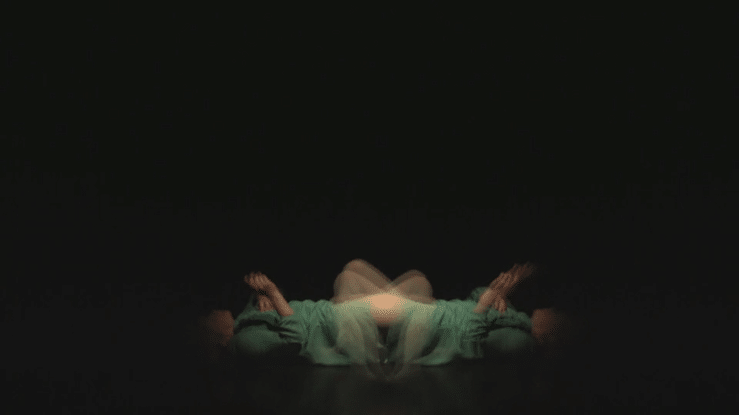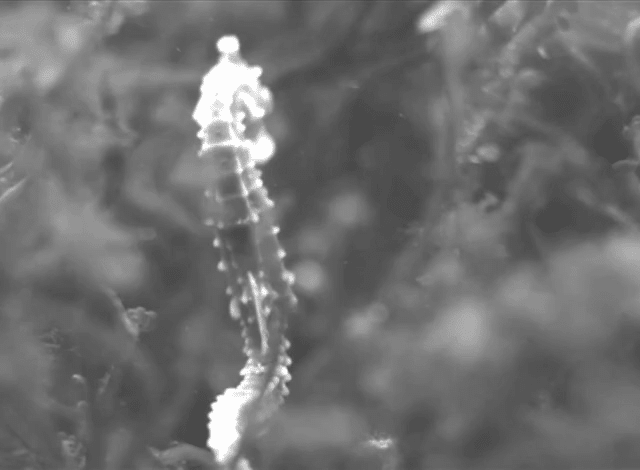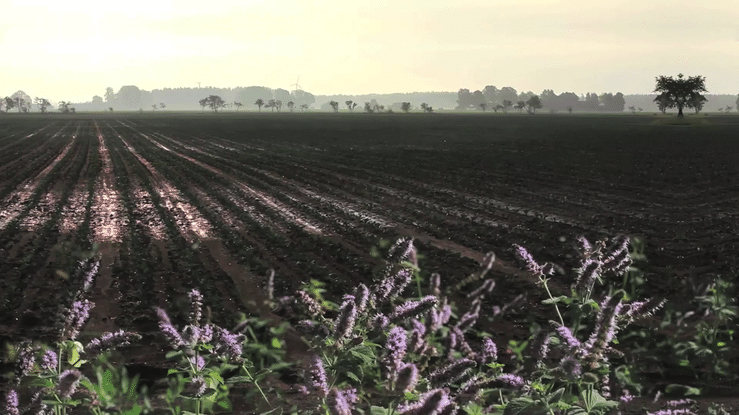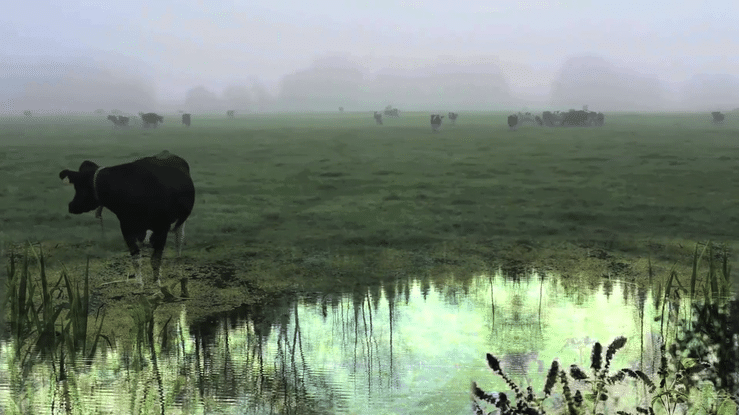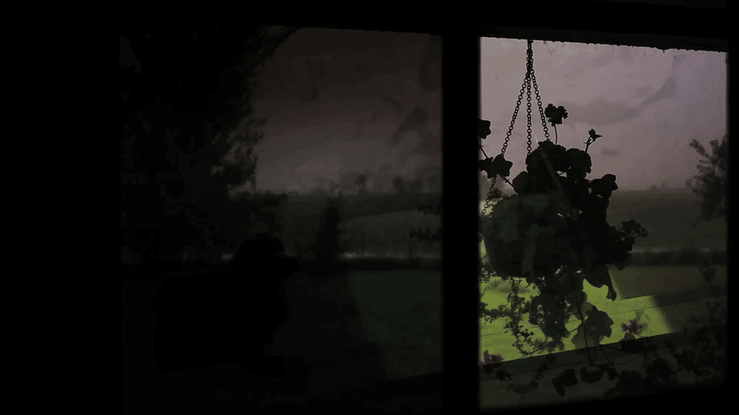Gränsland, del 2 / Twilight Zone, part 2
Stills from video installation, 5:30 min in a loop
2023
Music: Anders Hagberg
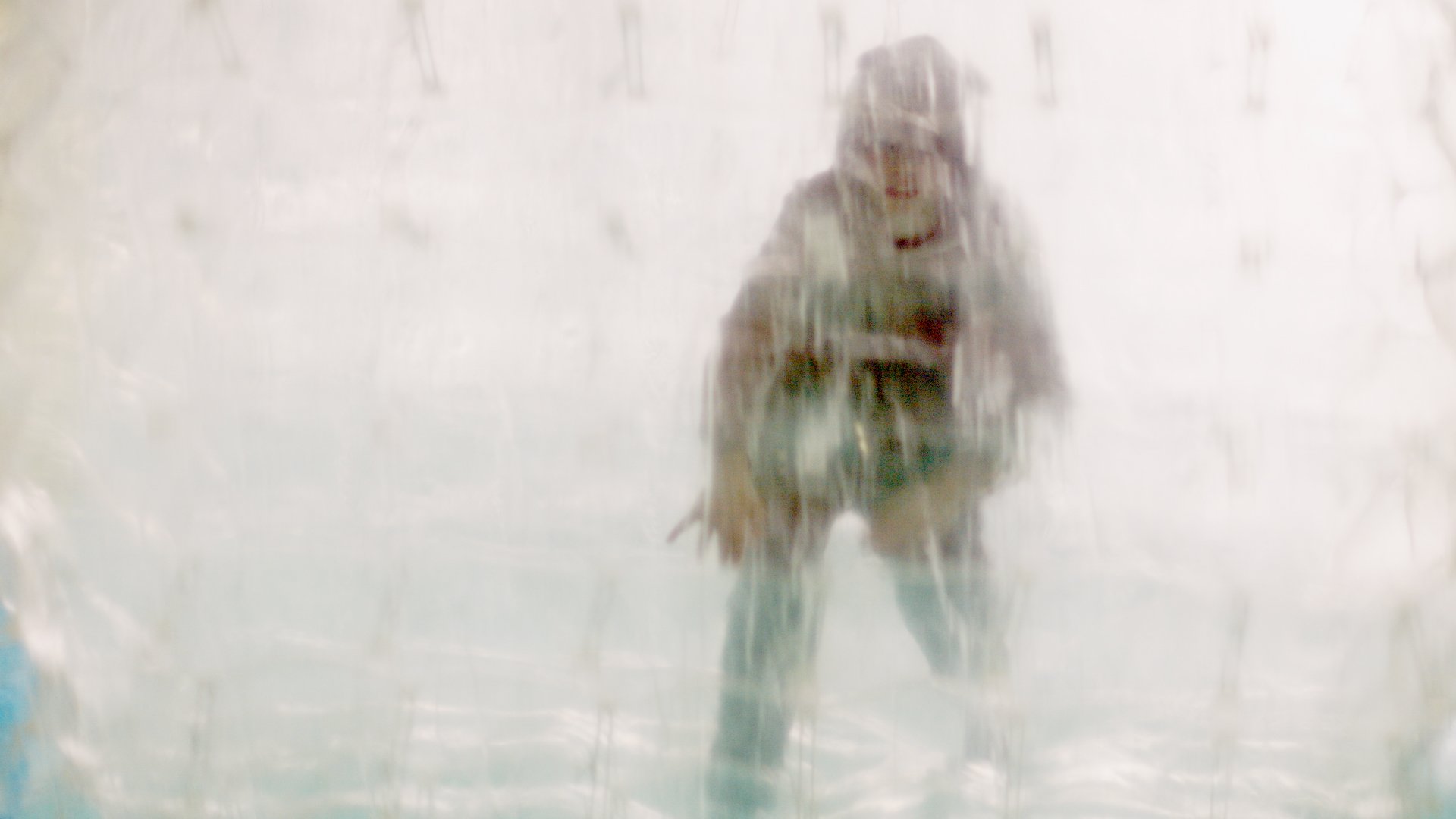
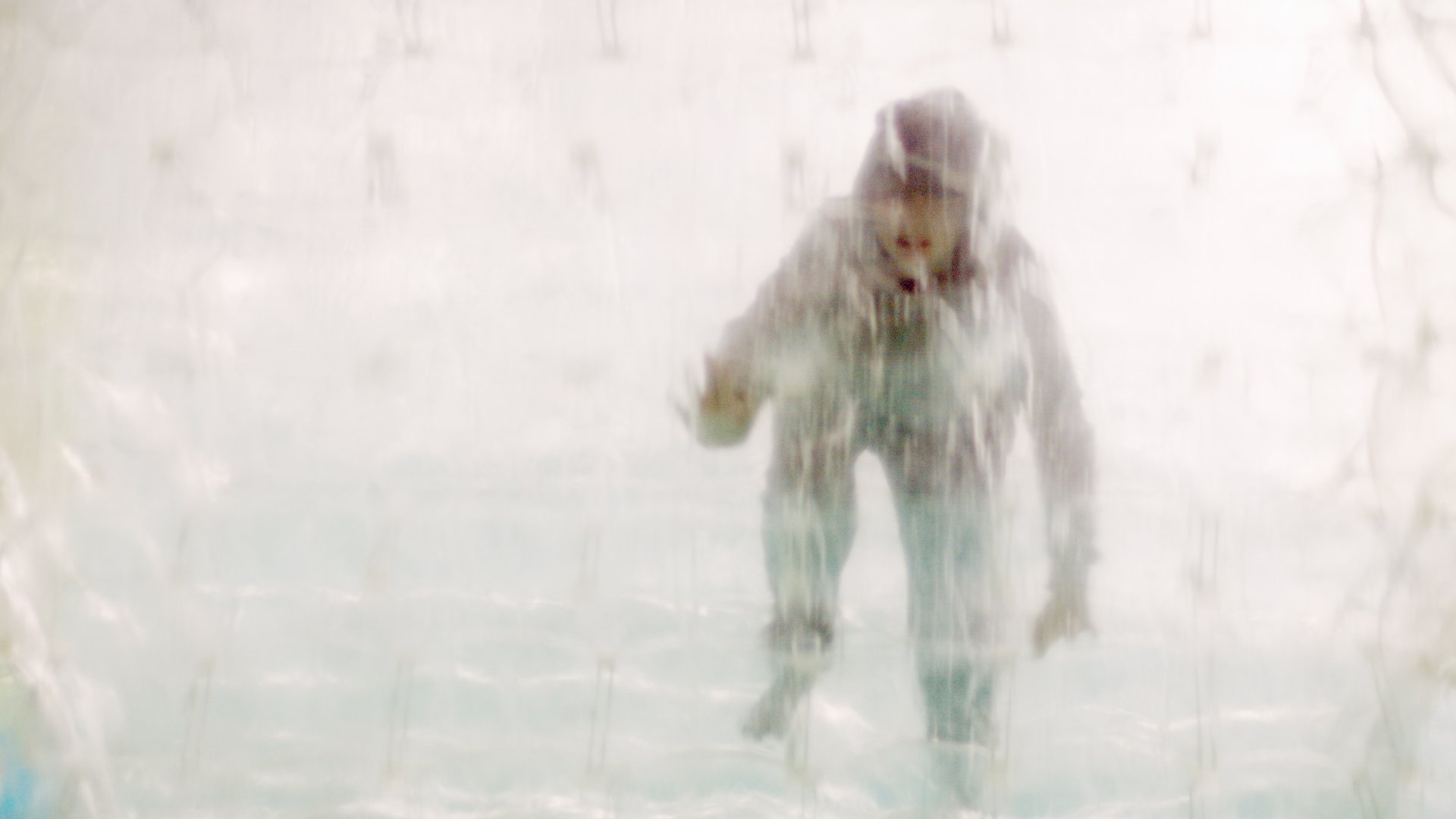
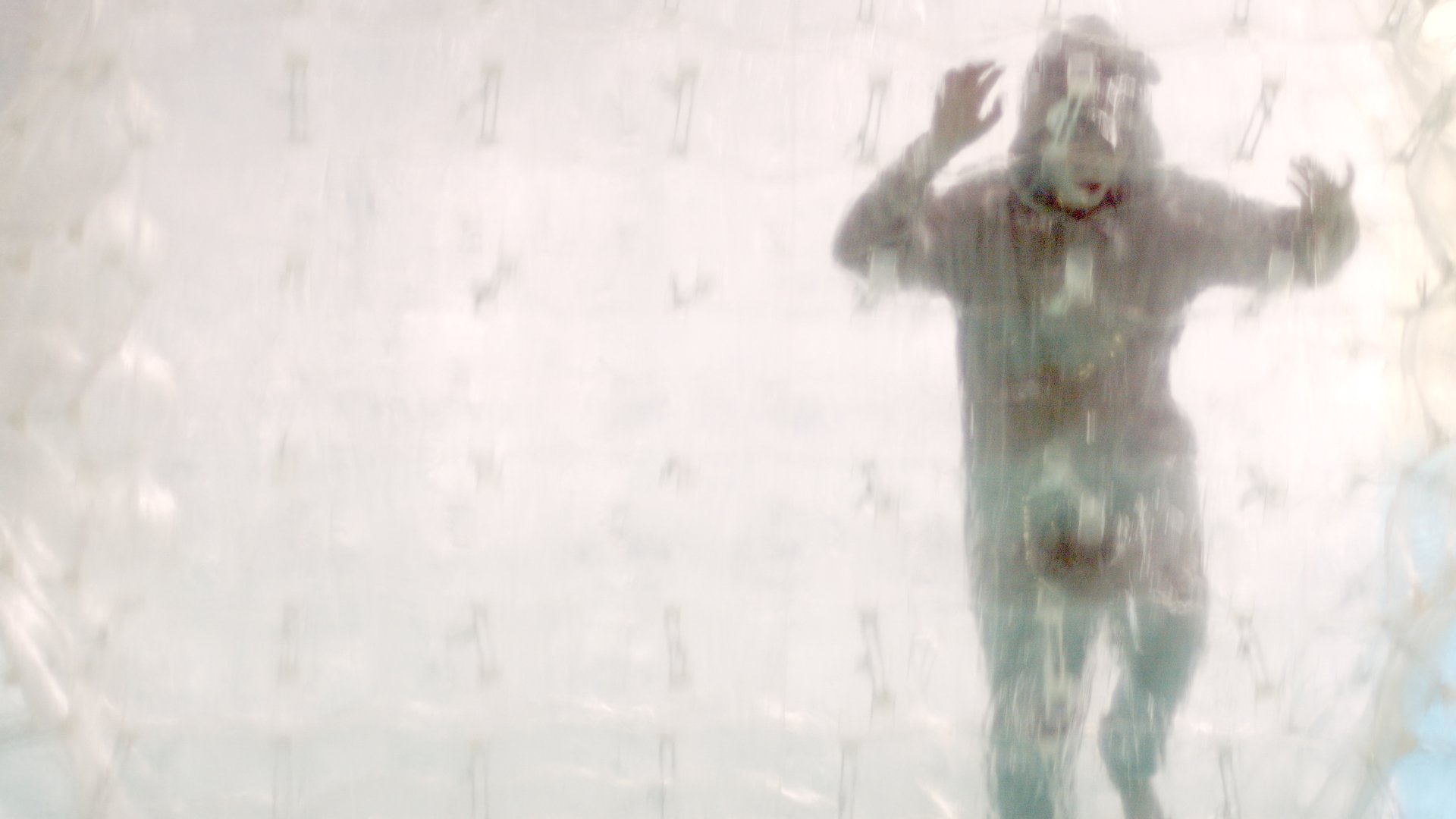
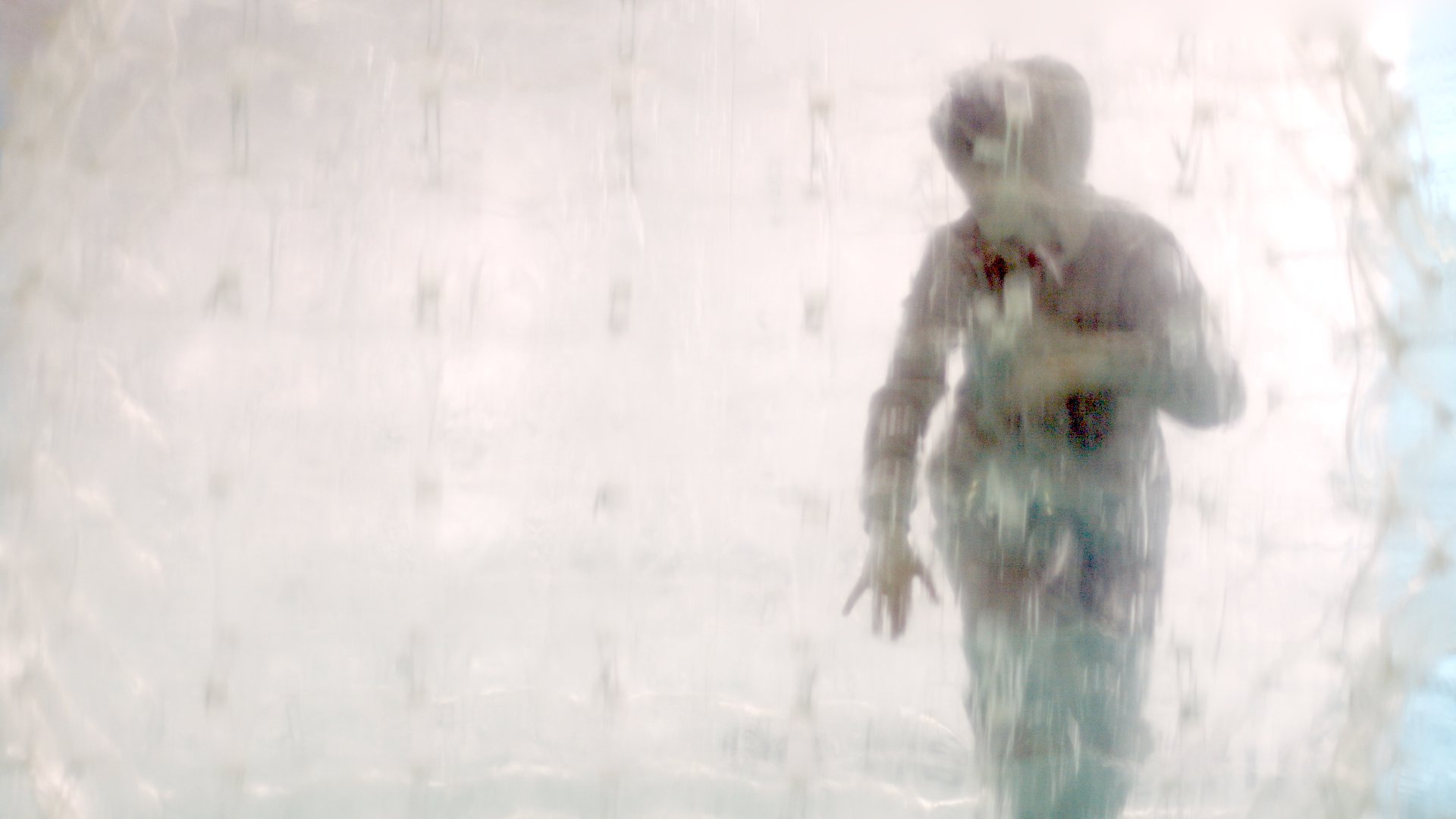

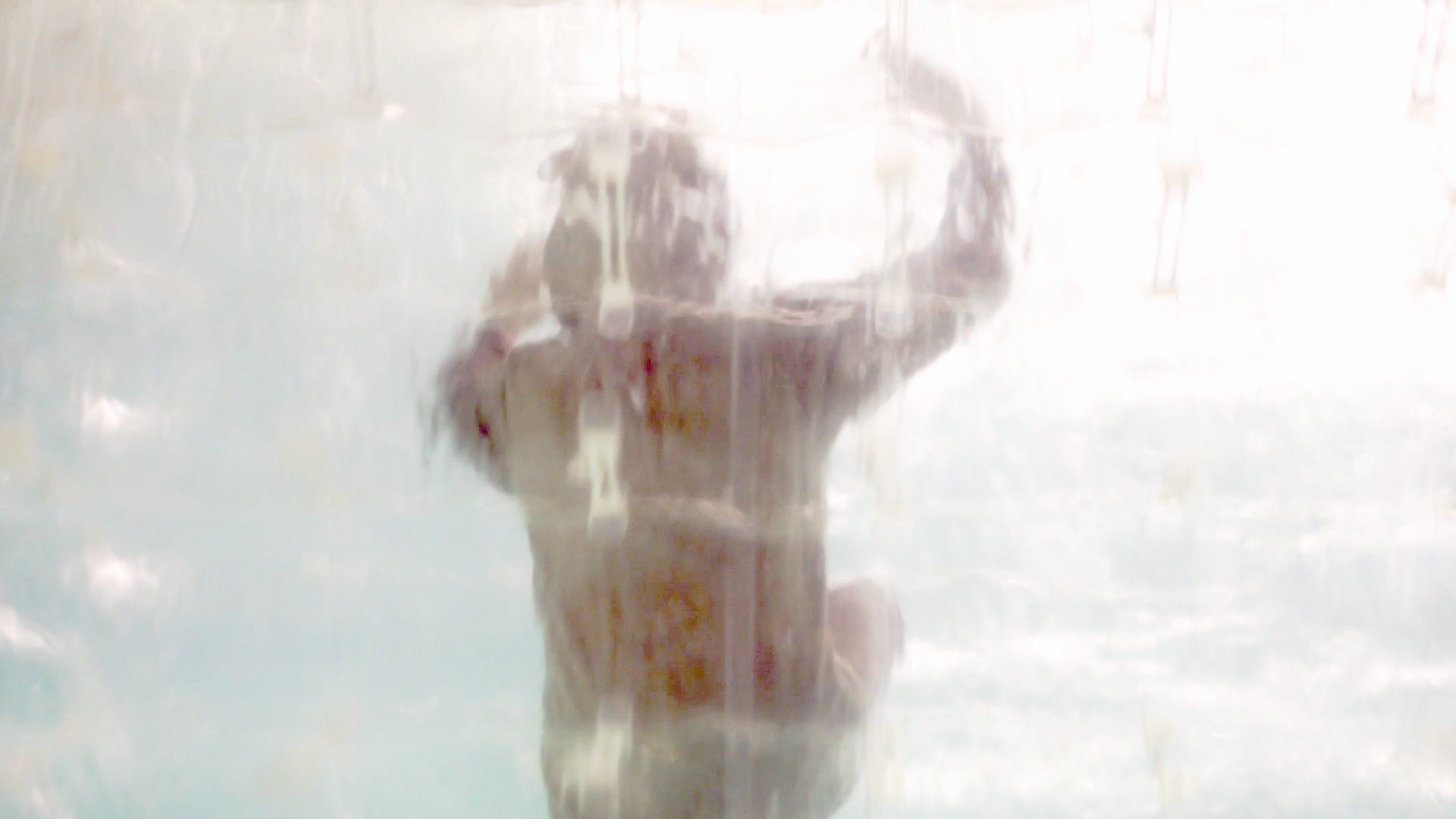
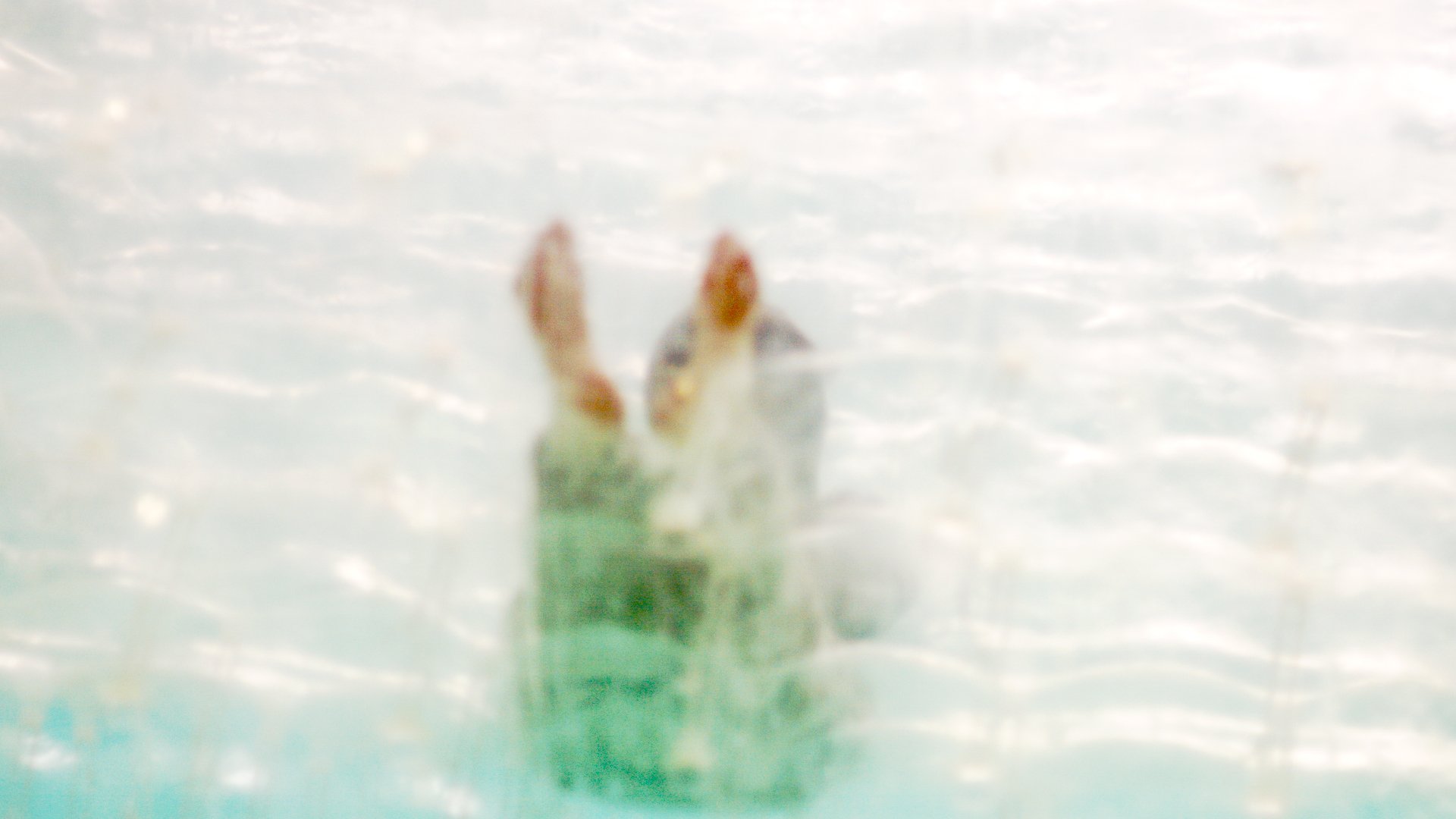
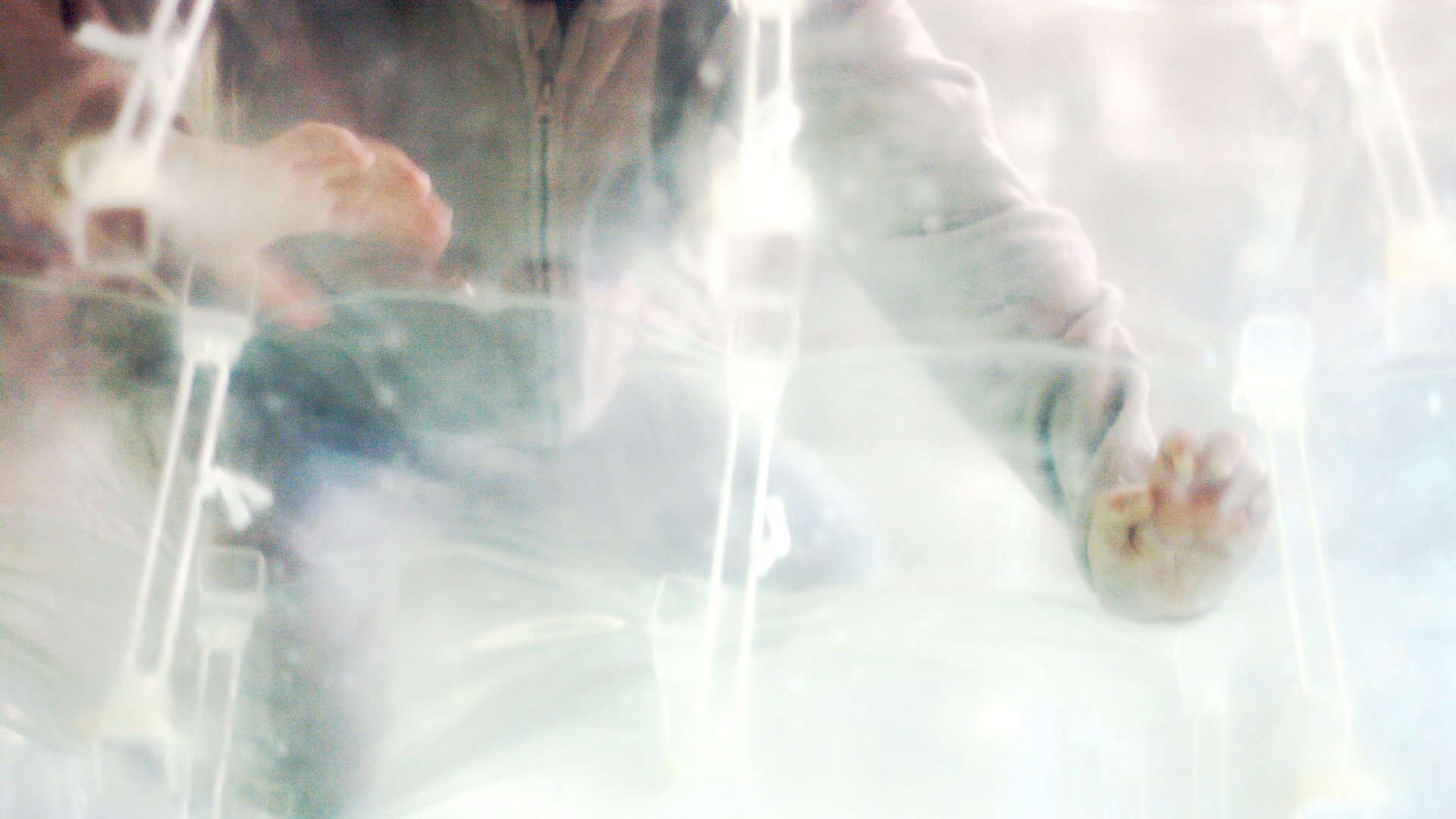
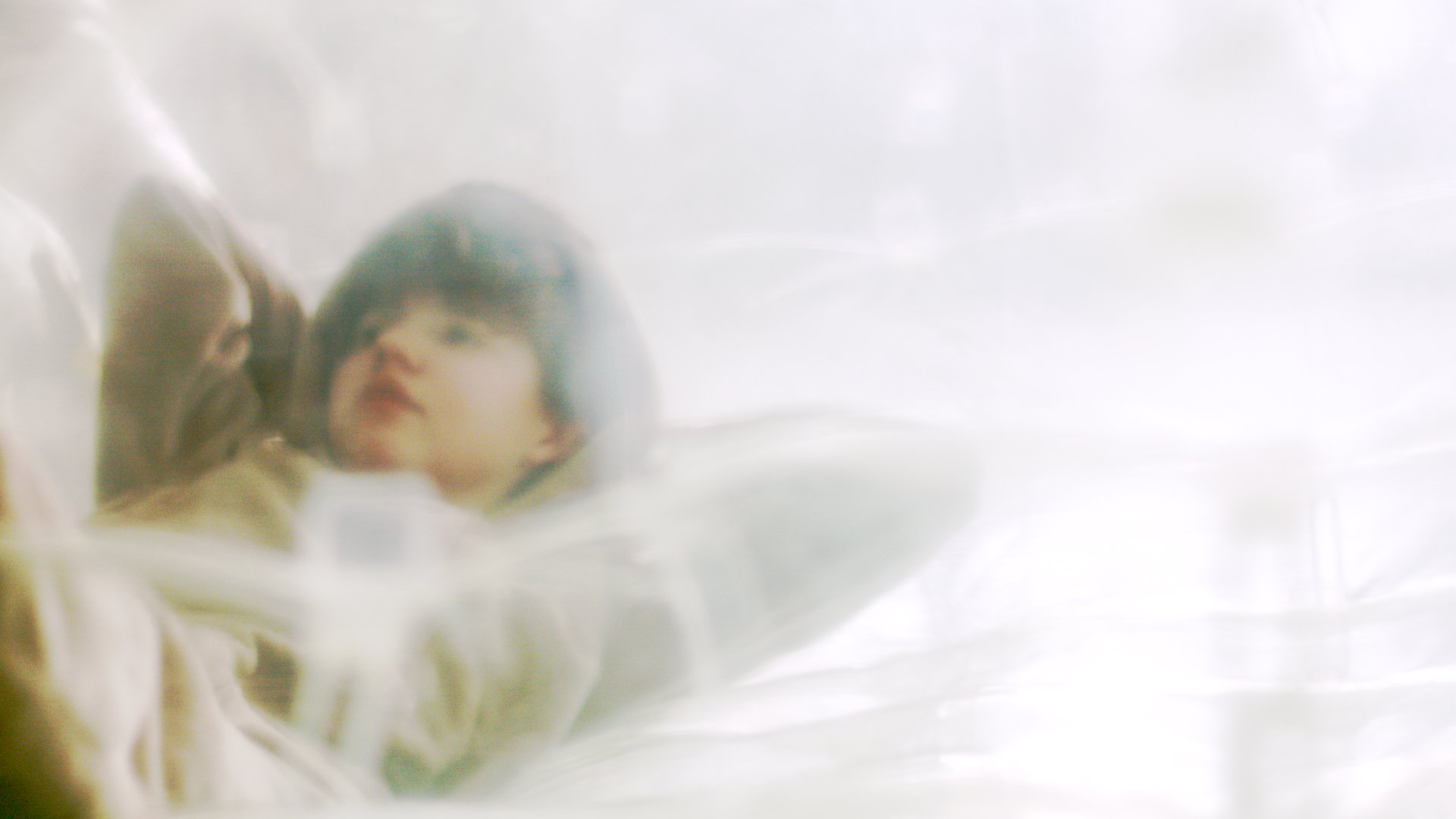
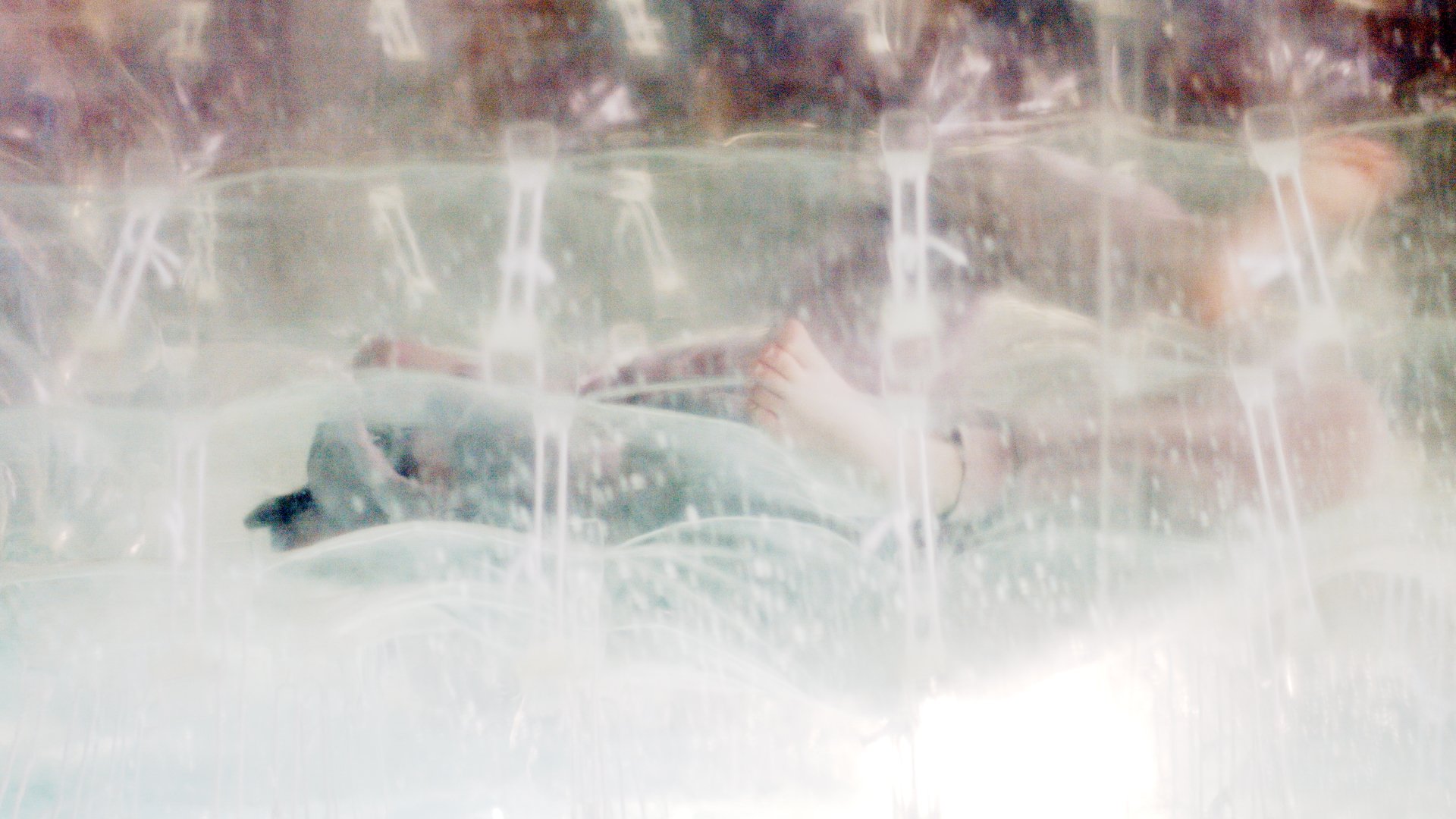
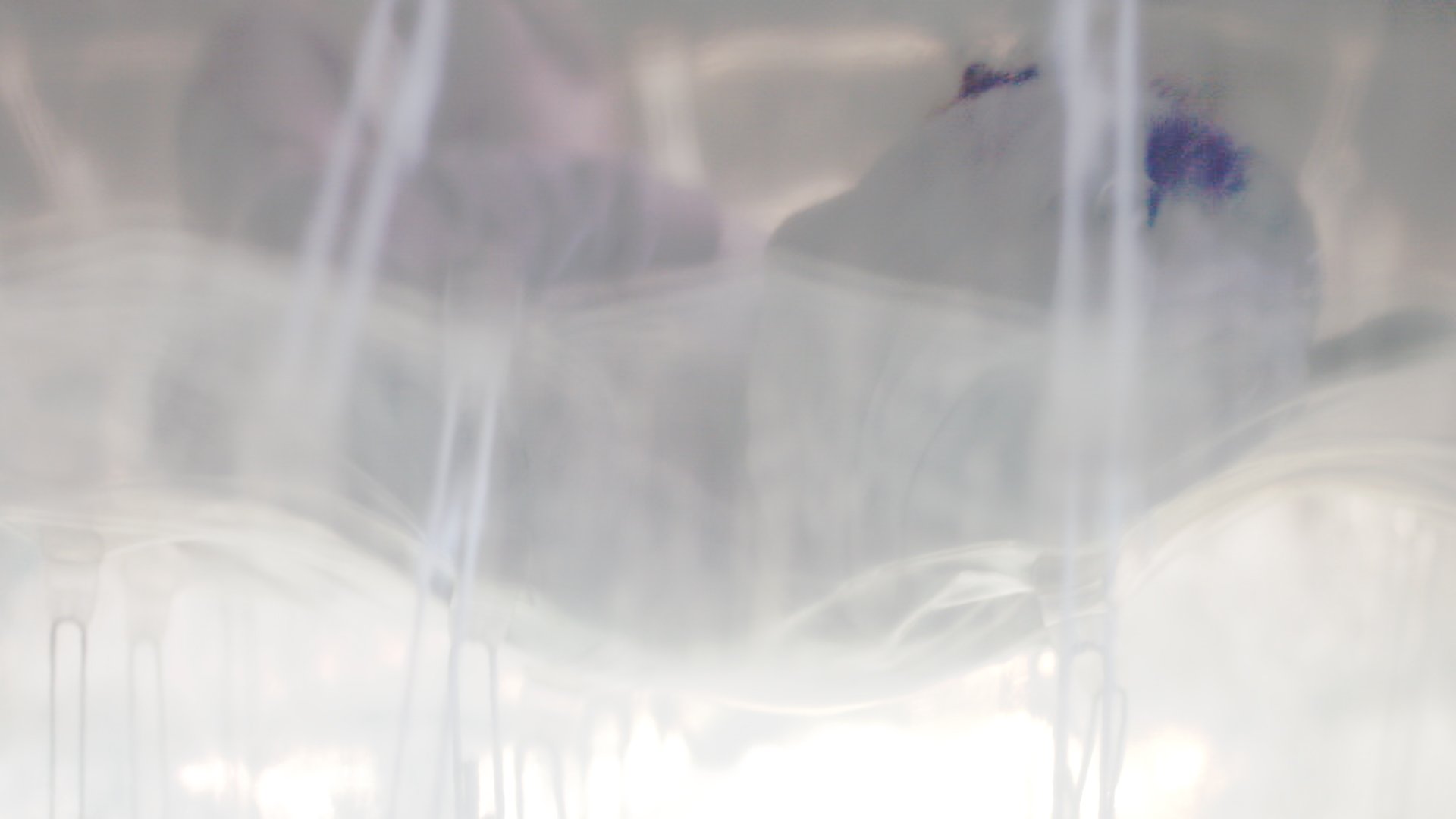

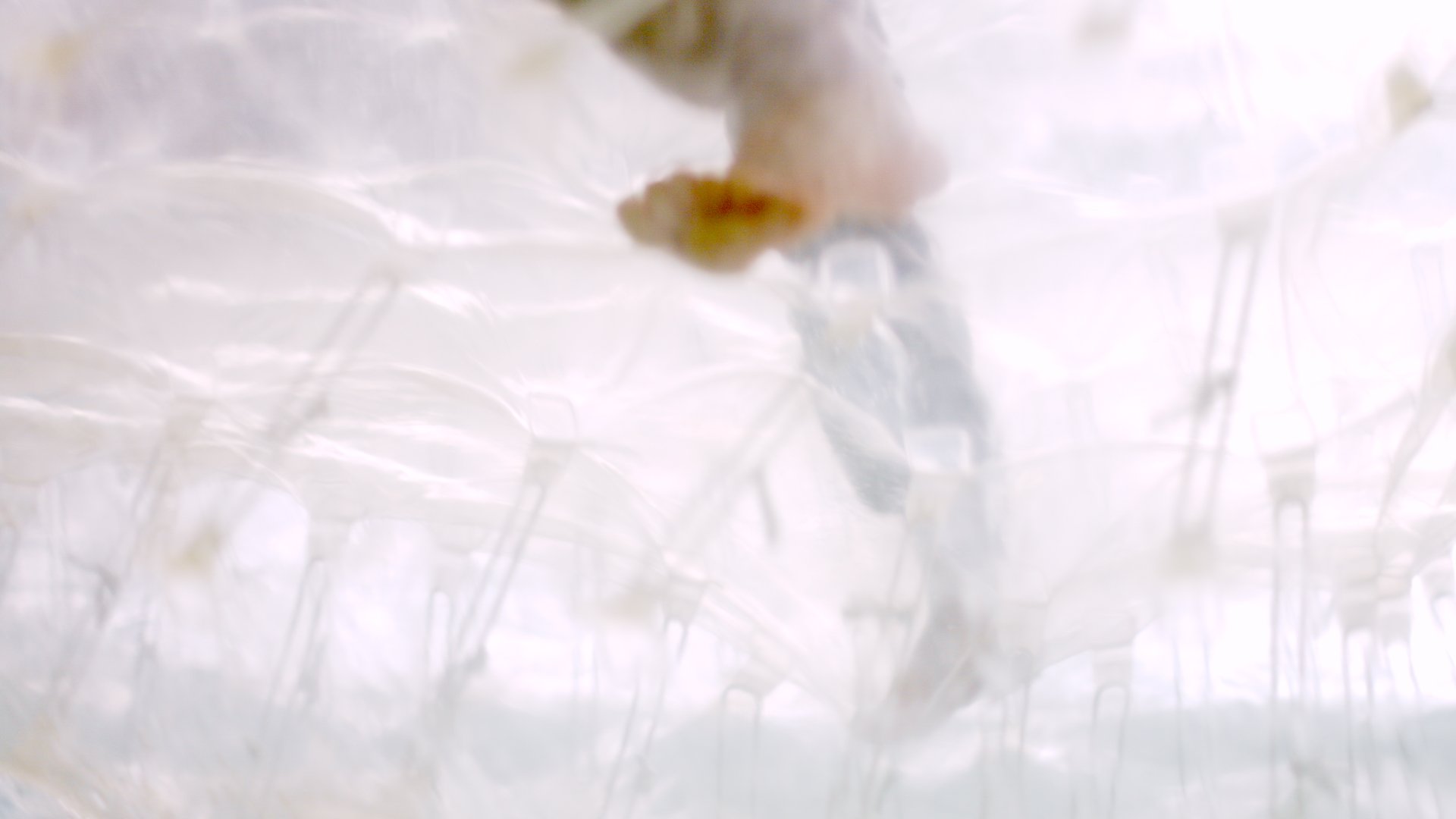
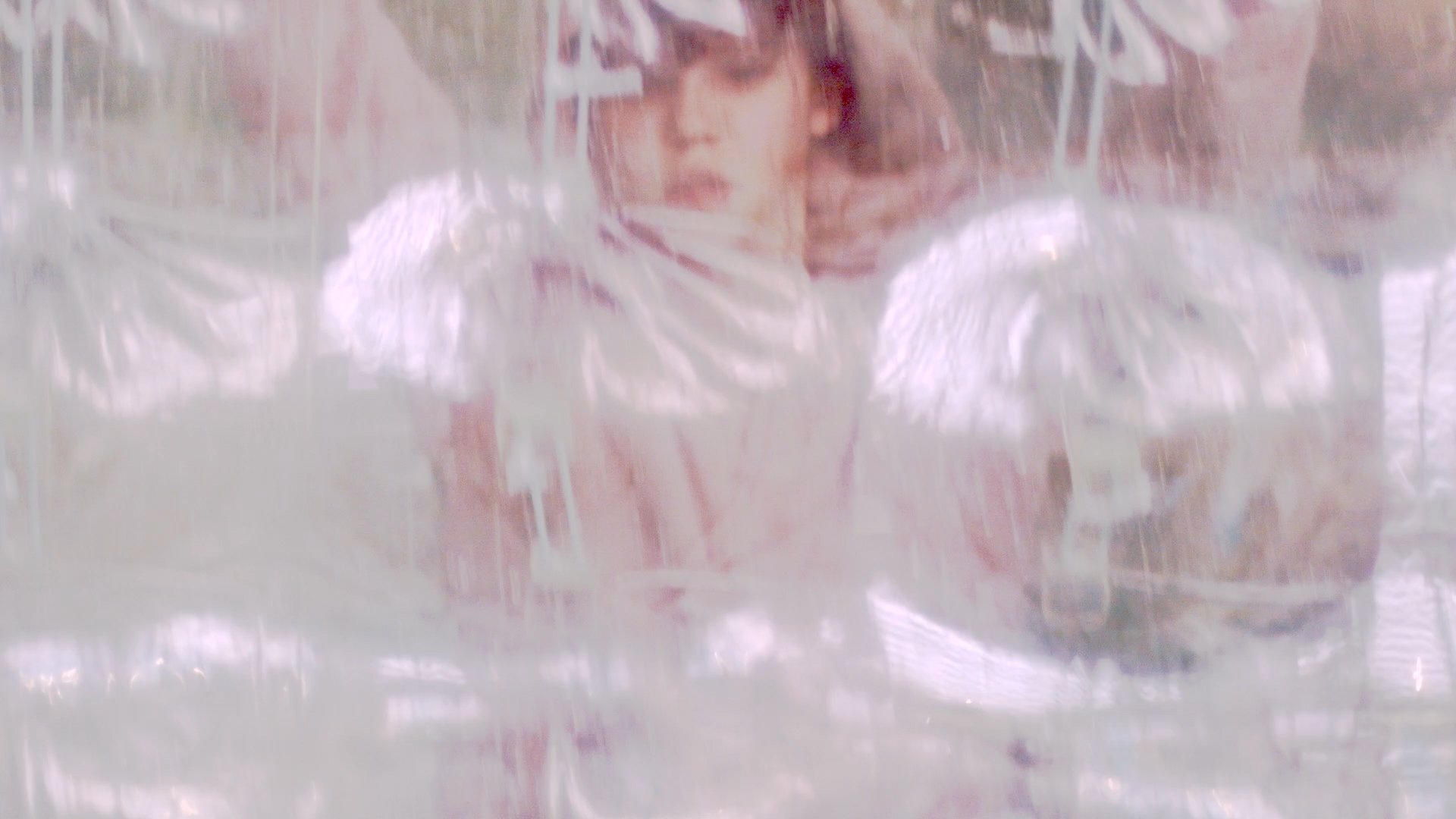
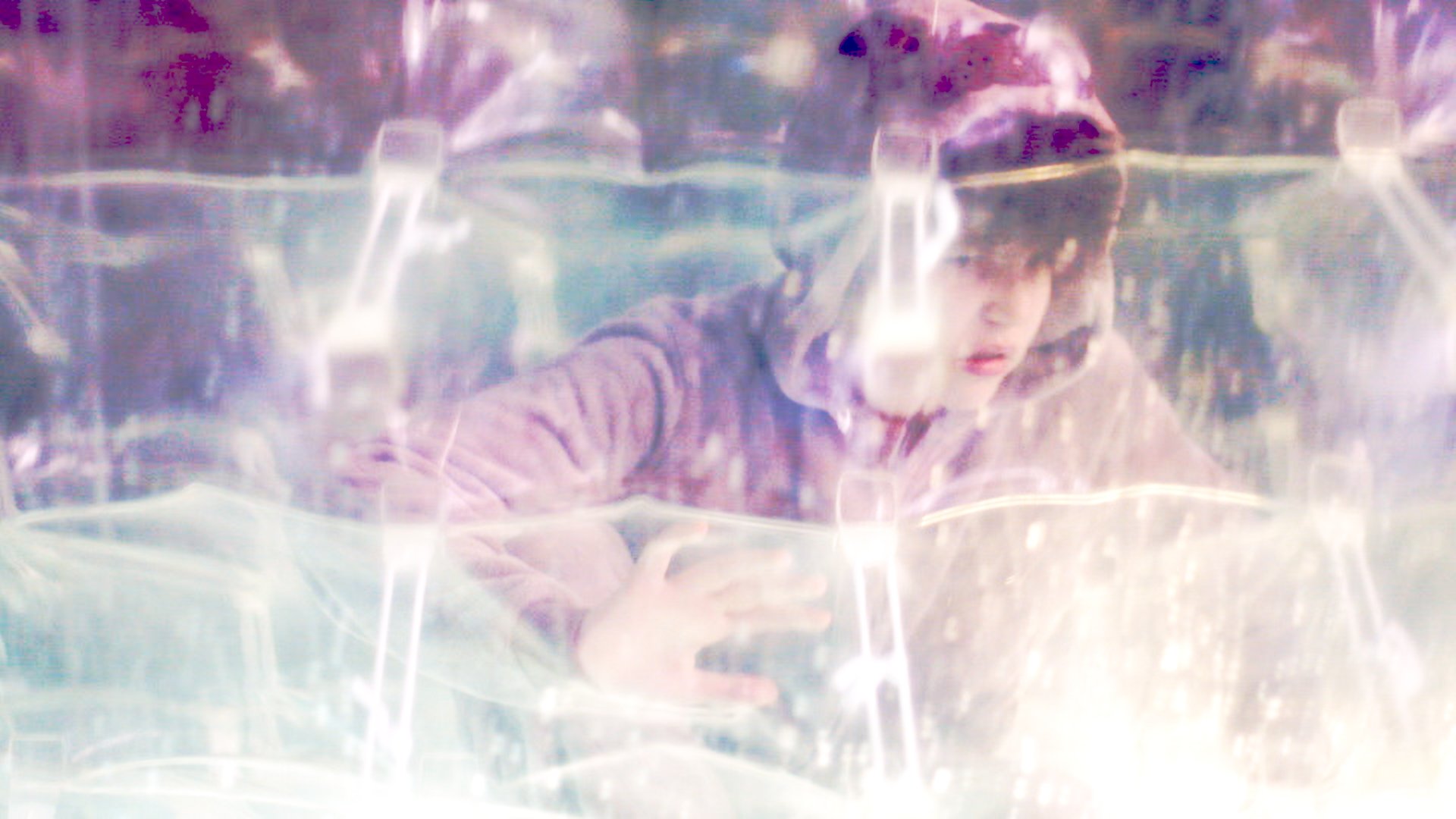
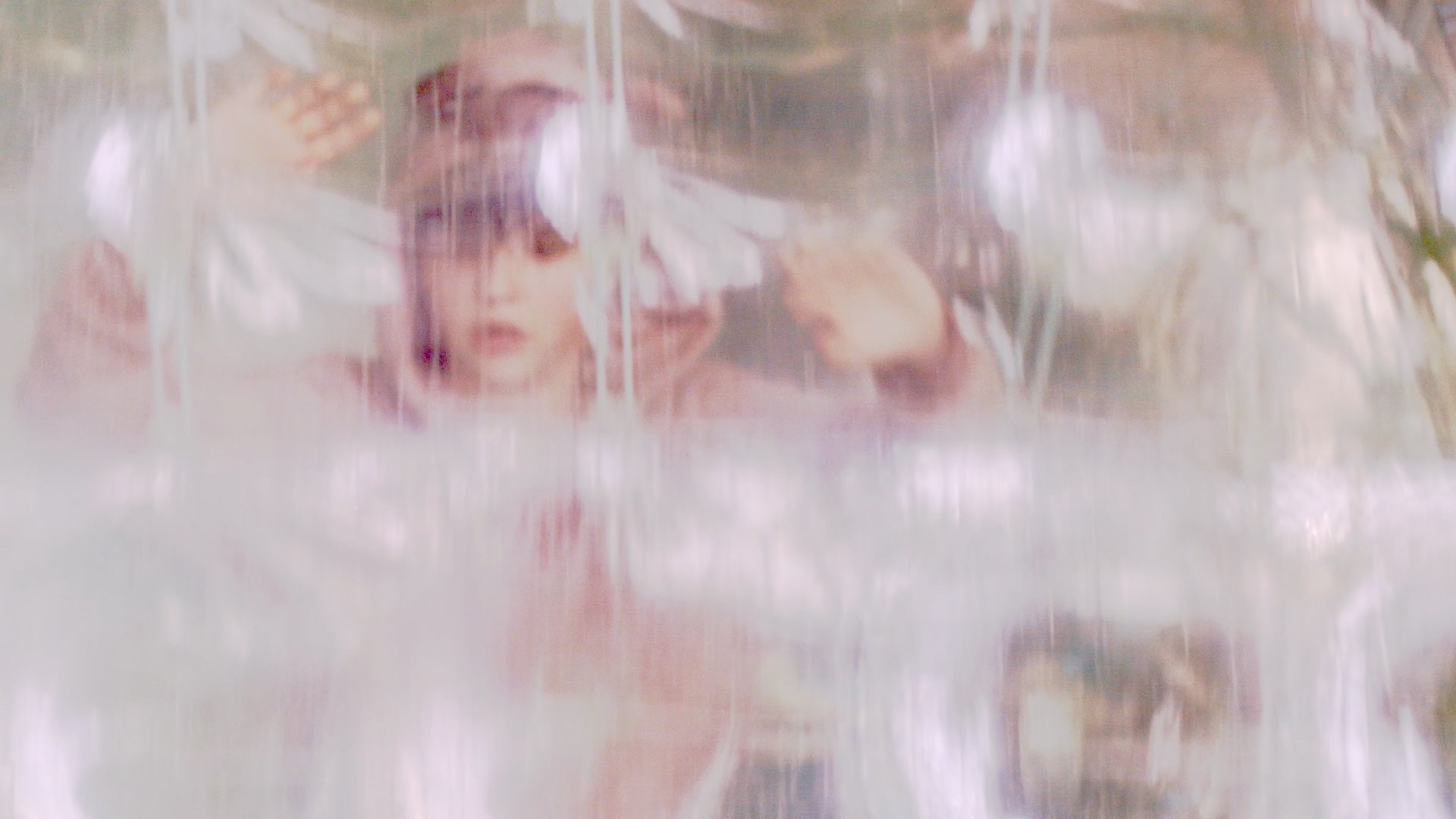
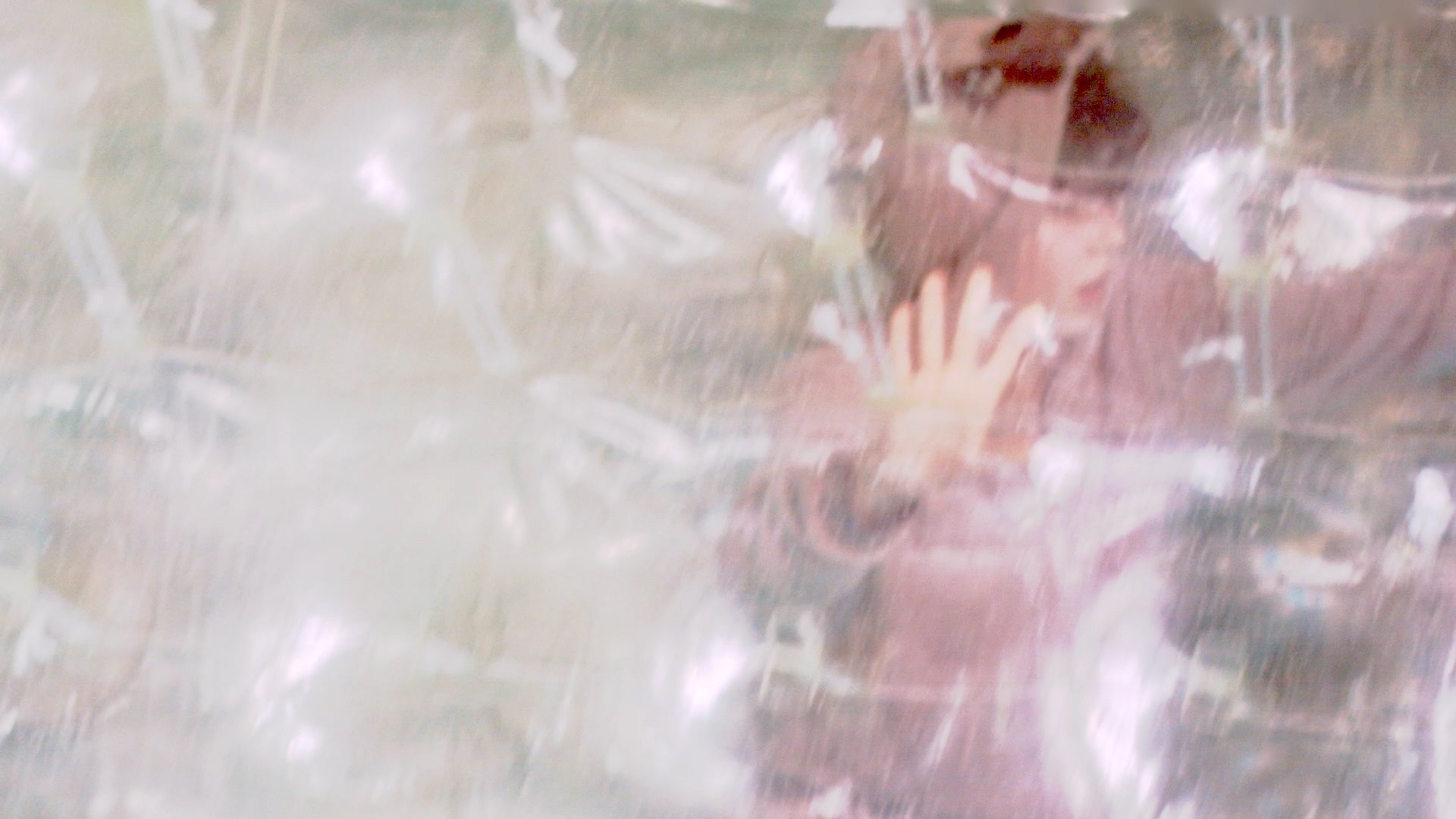
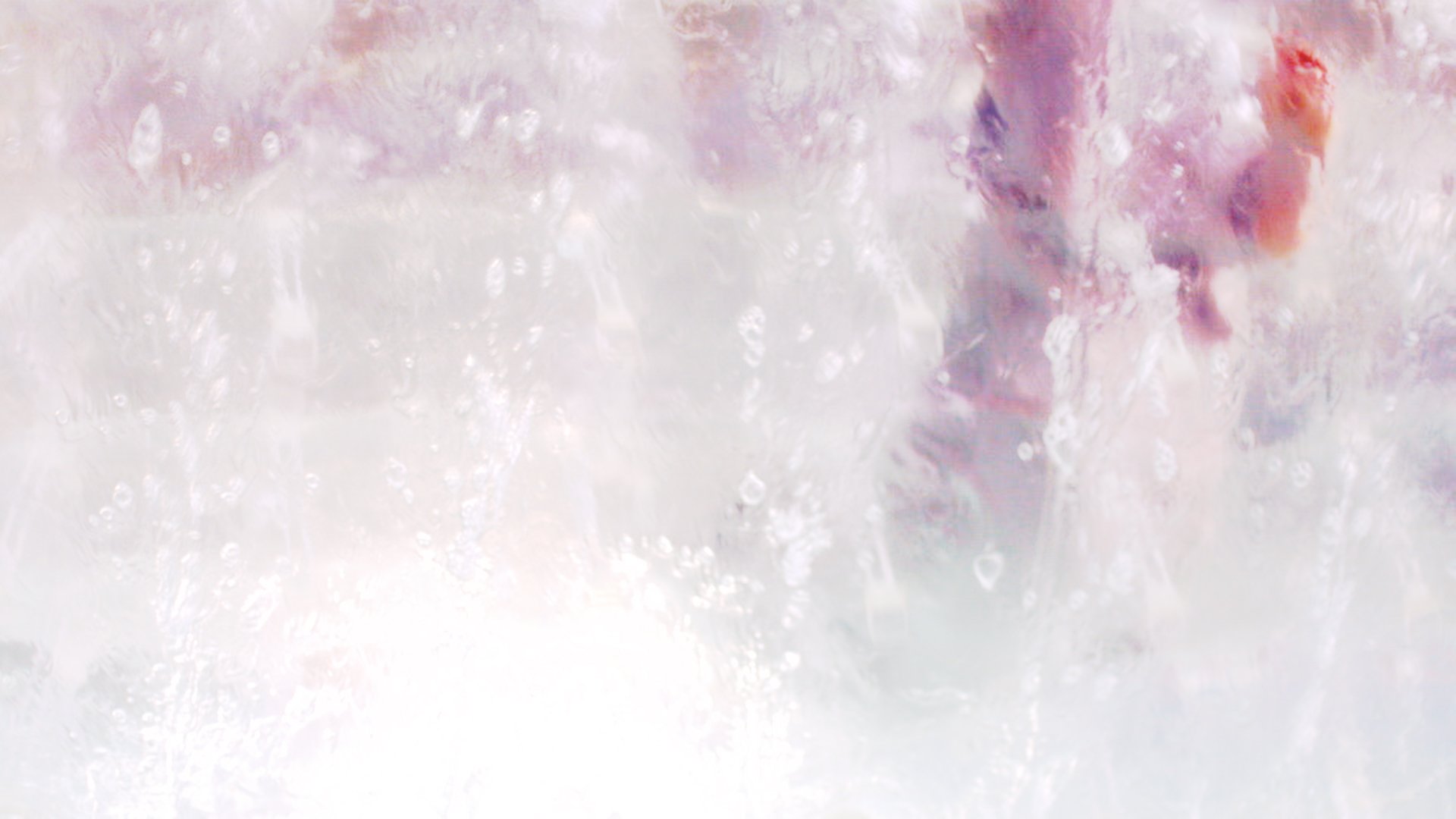
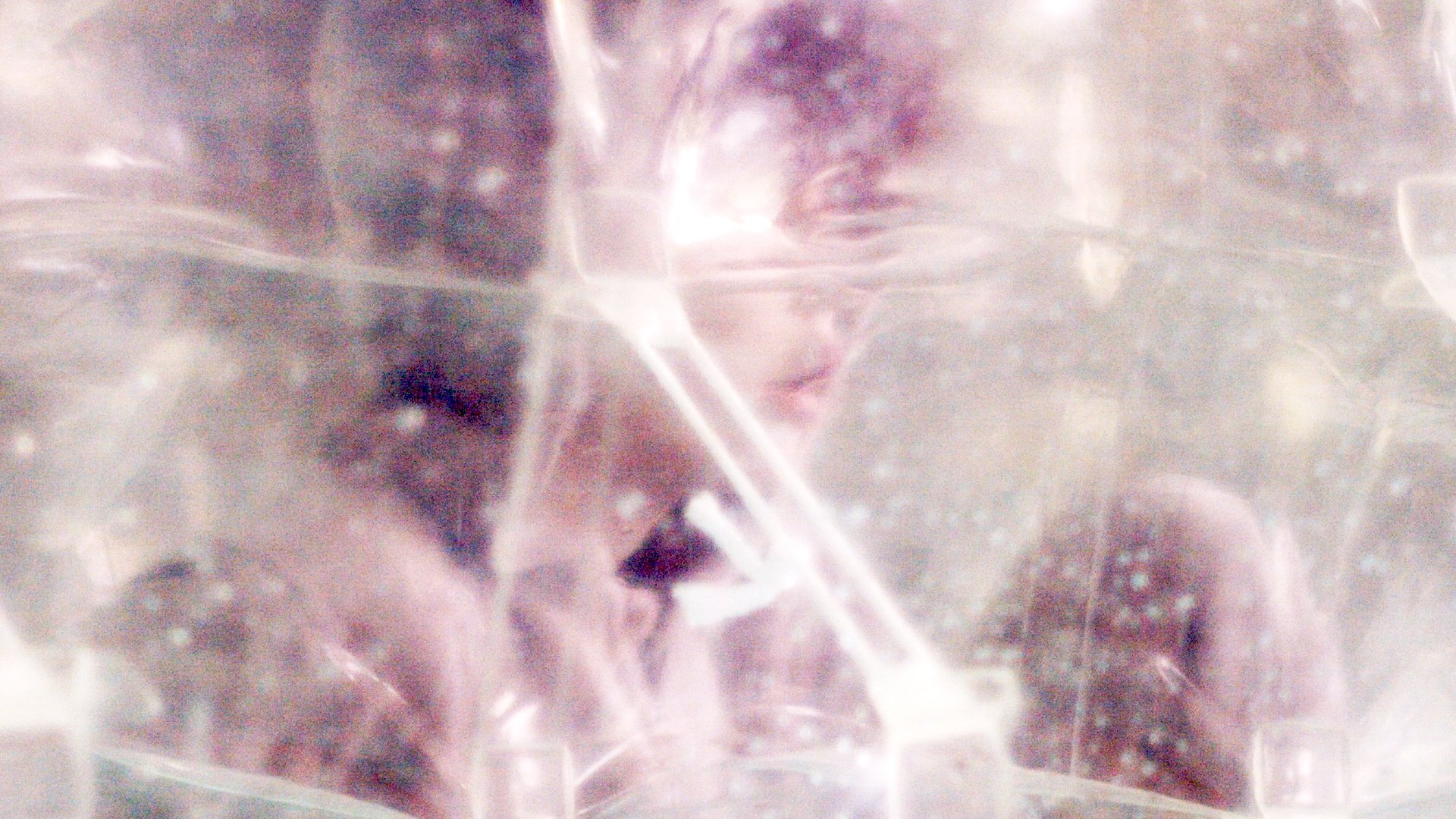

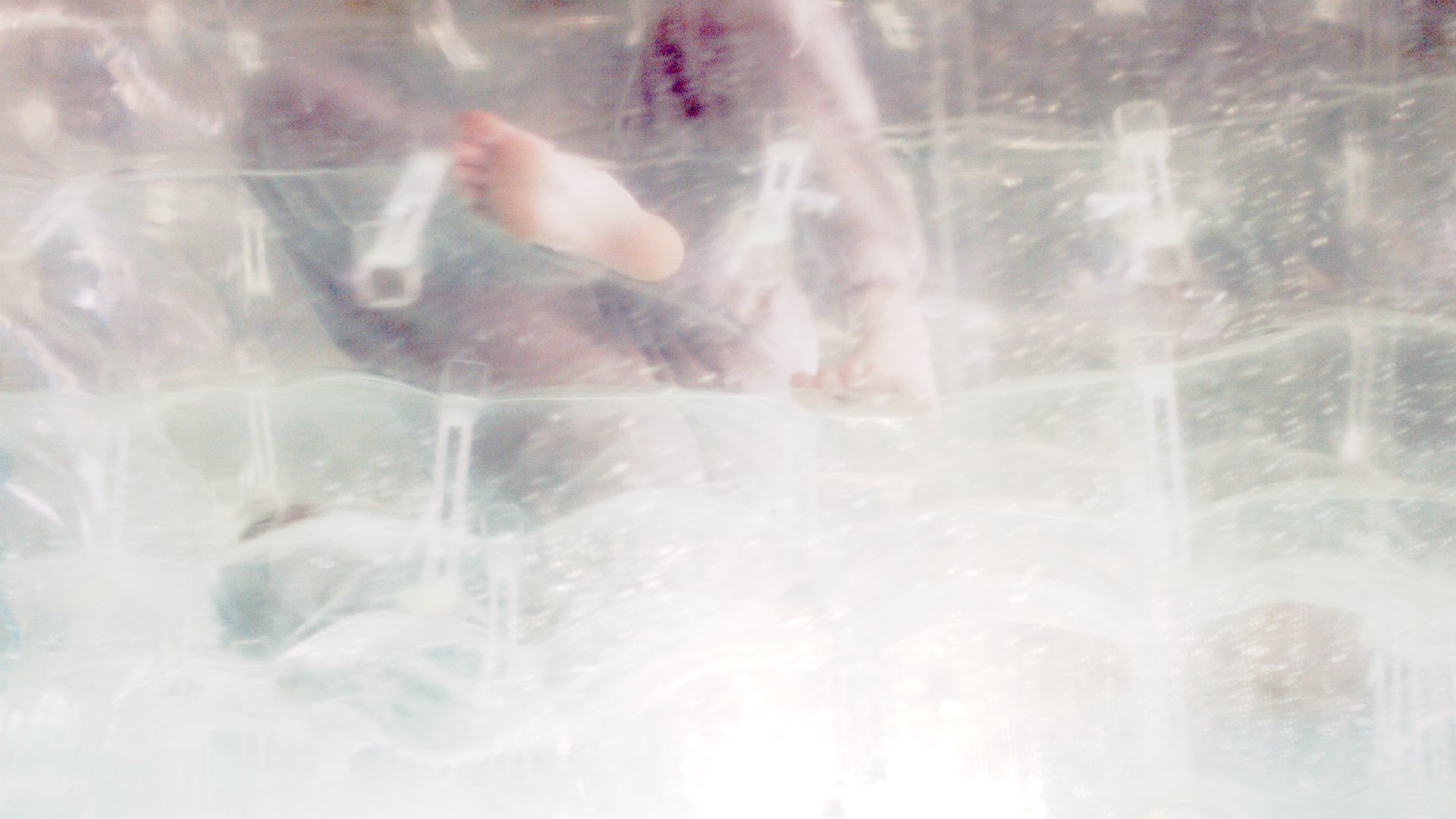
Gränsland, del 1 & 2 / Twilight Zone, part 1 & 2
The thematic starting point for the work of Twilight Zone is a series of generic sculptures of children created in the 1940’s and 50’s. At this time just after the war, public art in Sweden was often used to educate people and create a common narrative for a better future. The children in these sculptures, mostly naked young girls seen through the eyes of male artists, became symbols of hope for a better tomorrow, but also a symbol of health and the natural order of things. These sculptures got me thinking about how I, as a female artist, would choose to portray a child today, and how a child today would want to be portrayed. The answer, I realized, was anything but simple. In a time when we are surrounded by an unprecedented flow of images, and people´s self-awareness is at an all-time high, the child's encounter with the camera becomes ambivalent. The pure joy of a child playing is present, but also glimpses of insecurity, self-awareness, and self-control. This becomes especially visible in the second part, Twilight Zone, part II, which was filmed three years later than part I. Here the child has become a teenager. The teenager’s desire to be a child and to play is still apparent, but not without a conflict of interest, making the playing soft and beautiful as well as aggressive and frustrated.
The works are created in collaboration with the depicted child, actor Emmylou Almén and the musician/composer Anders Hagberg.
/extract/
Gränsland, del 1 / Twilight Zone, part 1
Video installation, 1:30 min in a loop
2021
Music: Anders Hagberg
Installation view from Galleri PS, Gothenburg.
Documentation from Galleri PS, Gothenburg. 2021. Video installation, 1:30 min in loop. Music: Anders Hagberg.
Installation view from the group show Efterkänning at Kungsbacka Konsthall,2020.
Untitled Painting #14 relates to the space that exists between humans, humans and nature, and between that which is natural and that which is man-made. The girl/fairy tale being acknowledges the dichotomy between humans and nature, while at the same time questioning it. However much we twist and turn, we are still stuck in a tradition where humans are on the outside of nature, and in order to approach it, we take to mythical beings, fairy tales and magical thinking. We consider ourselves as more than nature, and the taming of nature, as well as of our own needs, is deeply rooted in our culture. A fairy tale being may be read as a reflection of humans and the society in which they live. A fairy tale being stroking a rabbit gets to test the modern human’s recognition of nature communicating with us.
/extract/ 1:30 of 13:26 min. The format is a cut-out from 9:16 to 16:9.
Untitled Painting #14
From the serie Paintings of Ecolonia
Video installation, 13:26 min in loop, no sound.
2020.
Kållängens tingshus. 2019.
Still from Untitled Painting #13
Untitled Painting #13 explores what might be perceived as beautiful, it does however not seek to romanticize or glorify our environments. It wants to bring the work past our preconceived notions about what we expect to be confronted with in a certain encounter. The poetic movement, through an alienated human body, creates untested combinations of movements, gestures and situations that thereby could lead to new experiences and implications. The potentials of a newfound language offer us a chance to discover ourselves anew. Here, it is about awakening, discover and get to know ourselves as part of nature.
The video is a paraphrase on the painting Meadow Elves by Nils Blommér.
/extract/ The format is a cut-out from 9:16 to 16:9
Untitled Painting #13
From the series Paintings of Ecolonia
Video installation, 7:30 min in loop, no sound.
2019.
Actor: Fanny Kivimäki
Stills from Untitled Painting #12
Untitled Painting #12
From the series Paintings of Ecolonia
Video installation, 3:07 min in loop, no sound.
2018
Actor: Fanny Kivimäki
Untitled Painting #12 relates to ”the in between” that exist amongst humans, human and nature and the natural and the manmade. A physical and mental experience is presented through an abstract and sensual interpretation of a human shape placed in nature; a roadwork landscape that is both beautiful and daunting, recognizable and alienated. Is this a broken nature or a landscape full of anticipation in the process of changing?
Hologram of Ecolonia #30
Site-specific video Installation in infinity loop
Projection on walls, floor, pipes and grid
No sound
2019
Installation view from the exhibition Portal at Pannrummet, Konstepidemin, Gothenburg [Sweden].
The Mind is a Muscle
Video installation, 10 min loop, no sound.
2018
Dancer: Fanny Kivimäki
Commission for Staup Helsehus, Levanger Municipality, Norway.
“A cycle of different phases in life, physical experiences and moods. The dance is the poetry of body. How do one experience one’s own body – how do one feel it? ”
When one speaks of dance and movement it is possible to differ between the controlled and the free movement. What separates them are the degree of awareness and depth. Simply put the controlled movement is choreographed whereas the free movement has a lower degree of awareness but a greater depth. Many movements in our everyday life is performed through habitual patterns that we have in our bodies and is thereby governed by rules. But to run or to walk may also be free movements, as long as you find a way into the movement that enables you to perform it freely. An interesting discovery that science has provided is that we are more capable of reading emotional states of mind after we have performed a free movement than we are after we have performed a controlled movement. In other words, after we have performed a free movement we are more likely to connect with our emotional adjustment. The video installation The Mind is a Muscle is inspired by the studies made by the scientist Åsa Unander-Scharin of how our emotions are affected by seeing a robot dance on a screen. The experiment shows that we are just as affected by watching someone else performing movements as we are when we are in a physical activity ourselves. In the artwork The Mind is a Muscle I have used the free movement.
The title The Mind is a Muscle is borrowed from a multi-divided performance made by Yvonne Rainer in 1968, where the dance of seven dancers is combined with film and text.
/extract/
Hologram of Ecolonia #21
Video installation
1:28 min in a loop
no sound
2014
/extracts/
Turbulence
Video Installation
10 min loop
sound
2012
Turbulence describes an experience of nature, excluding the human wish to dominate it. It perceive something hidden in the "more" of nature, beyond what we can see with bare eye. The video become a sort of an embodiment of beauty and intensity that is enigmatic, on the edge between reality and fiction.
Undertow / Underströmmar
Video Installation
10 min loop
sound
2008
The video corresponds to our inner world of dreams and remembered images that constantly is in motion and is changing. What is true and what is not true of all that we register and experience?
